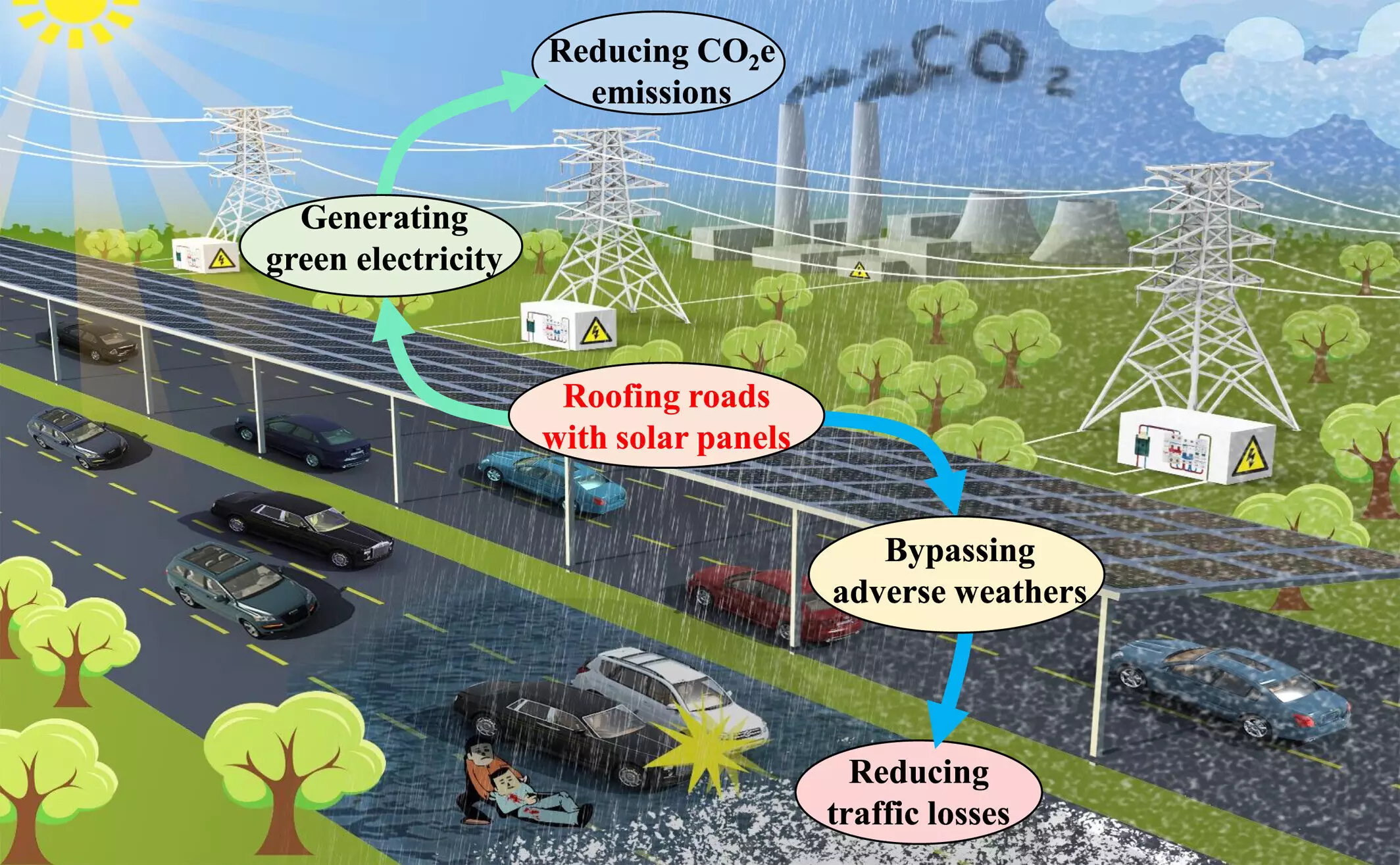Recent studies reveal a revolutionary concept that could significantly alter the landscape of energy generation and road safety: covering highways with solar panel roofs. This innovative idea emerges at a critical time when global efforts to combat climate change intensify. The potential benefits from such a project are substantial, with researchers estimating that it could decrease carbon dioxide emissions by around 28% worldwide. This reduction stems from diminishing the reliance on fossil fuels for energy generation, which constitutes a major contributor to global warming and air pollution.
The study, published in Earth’s Future, suggests an ambitious framework where solar panels would be installed not only above highways but other significant road networks too. This tactic would not only generate renewable electricity but also provide protection to vehicles from adverse weather conditions, potentially enhancing safety whilst simultaneously promoting sustainability.
Ling Yao, the lead research scientist from the Chinese Academy of Sciences, emphasizes that while pilot programs utilizing highway photovoltaic systems exist, they have yet to reach the transformative scale the study envisions. Yao’s inspiration struck during a routine commute when he recognized the interconnectedness of road networks. His idea was straightforward yet visionary: Why not utilize vast stretches of asphalt—currently underutilized land—to generate renewable energy? The concept presents a dual opportunity: creating a cleaner energy future while maximizing the utility of existing infrastructure.
The calculated output from these hypothetical solar roofs is staggering. The research posits that the highways could provide approximately 17.58 petawatt hours of electricity per year—greater than 60% of the world’s total electricity consumption in 2023. Such power generation could drastically diminish the fossil fuel dependency, making significant strides toward global energy sustainability.
However, realizing this ambitious vision involves addressing practical challenges. The study outlines the need for around 52.3 billion solar panels to install across the world’s extensive highway network, which spans over 3.2 million kilometers (1.9 million miles) globally. This endeavor would require intricate planning, profound investment, and detailed analysis of geographical factors impacting installation costs and energy output efficiencies.
One of the interesting aspects of the proposed solar roofs is their adaptability to localized environments. The researchers anticipated operational variances based on geographic density, projected that installations in populous regions—primarily in eastern China, western Europe, and the U.S. East Coast—would yield the most significant benefits. Furthermore, the projected energy output could replace up to 9.66 gigatons of CO2 emissions annually, about two-thirds of the United States’ greenhouse gas emissions as of 2022.
Beyond environmental advantages, the solar roofs could significantly enhance road safety. The study argued that such innovations might reduce traffic fatalities by 10.8%, particularly in areas prone to severe weather conditions. These roofs would act as a barrier against rain and snow, improving visibility and traction for drivers. The consequent reduction in traffic accidents would also translate to substantial economic benefits by lowering the associated costs of road mishaps.
Another challenge looms large: the initial costs. Estimates suggest that developing solar roofs might be up to four times as expensive as traditional ground-mounted solar arrays. Long-term benefits could justify the initial financial hurdles, but the feasibility will largely depend on efficient financing models and governmental support.
Moreover, infrastructural maintenance, especially the cleaning of numerous solar panels, represents another logistical puzzle that requires addressing. It prompts questions about resource allocation and technological advancements in panel upkeep.
Ling Yao remains optimistic about the feasibility of this project. He envisions practical implementations in expansive, flatter highway sections, particularly in regions like the southwestern United States. He urges stakeholders—governments, private sectors, and communities—to collaborate and embrace solar highway initiatives to manifest this conceptual leap.
Ultimately, transitioning to solar-powered highways could redefine our approach to transport, energy consumption, and environmental stewardship. By integrating renewable energy technologies into our roadways, we could pioneer a groundbreaking model of sustainable development reflecting the pressing need for innovative climate solutions. As the world grapples with climate change, concepts like solar highways must be taken seriously, placing us on a path toward comprehensive ecological responsibility and energy independence.

